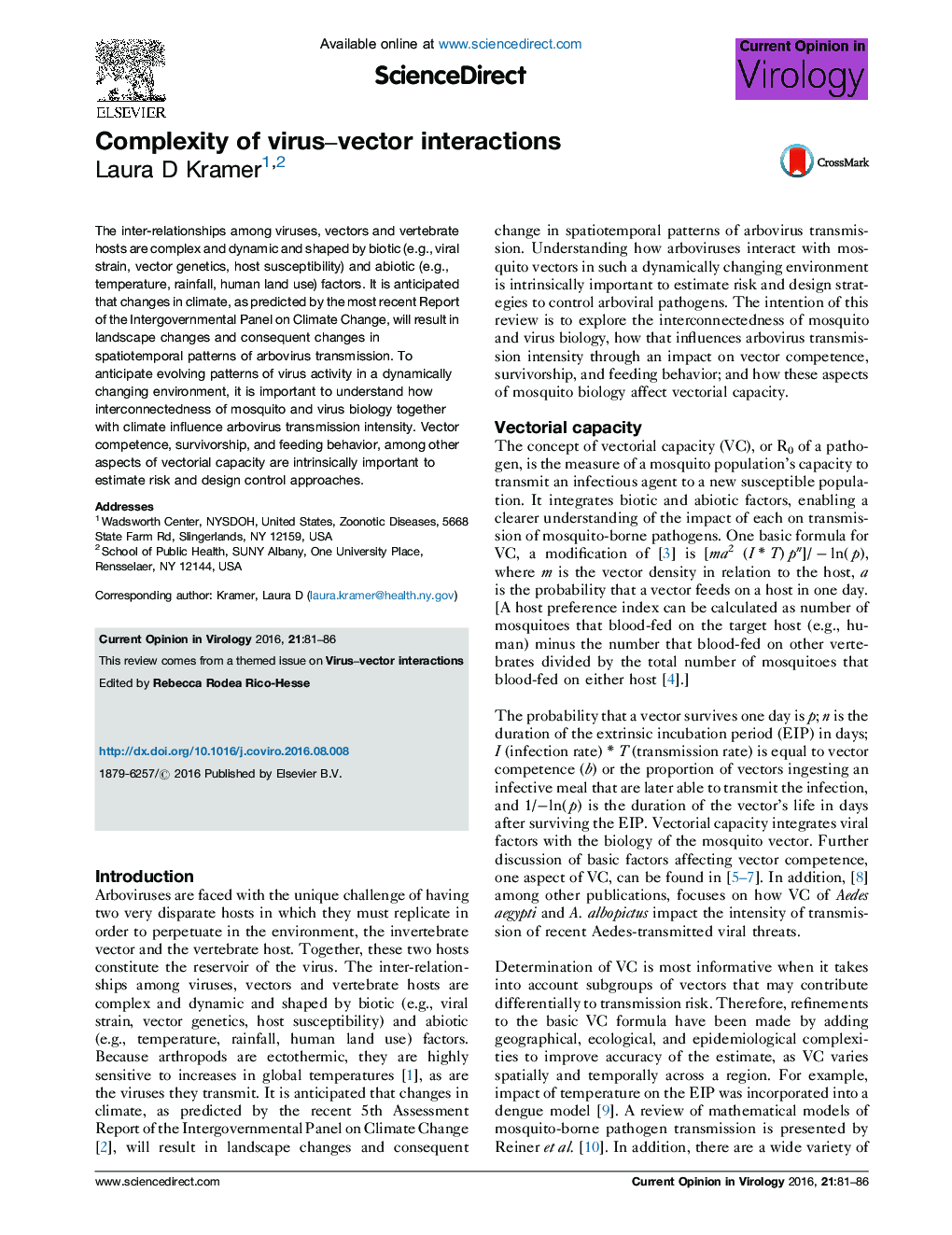| Article ID | Journal | Published Year | Pages | File Type |
|---|---|---|---|---|
| 2473149 | Current Opinion in Virology | 2016 | 6 Pages |
•Virus–vector interactions are complex and dynamic, affected by biotic and abiotic factors.•Vectorial capacity integrates viral factors with the biology of the mosquito.•The two most important components of vectorial capacity are survivorship and feeding frequency on susceptible hosts.•Virus and vector genetics affect vectorial capacity and interact in a genotype × genotype manner.•The larval environment has impact on vectorial capacity equal to the adult environment; both will be affected by climate change in variable manner.
The inter-relationships among viruses, vectors and vertebrate hosts are complex and dynamic and shaped by biotic (e.g., viral strain, vector genetics, host susceptibility) and abiotic (e.g., temperature, rainfall, human land use) factors. It is anticipated that changes in climate, as predicted by the most recent Report of the Intergovernmental Panel on Climate Change, will result in landscape changes and consequent changes in spatiotemporal patterns of arbovirus transmission. To anticipate evolving patterns of virus activity in a dynamically changing environment, it is important to understand how interconnectedness of mosquito and virus biology together with climate influence arbovirus transmission intensity. Vector competence, survivorship, and feeding behavior, among other aspects of vectorial capacity are intrinsically important to estimate risk and design control approaches.
